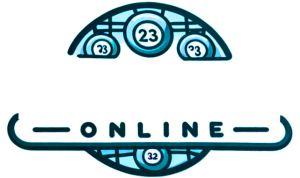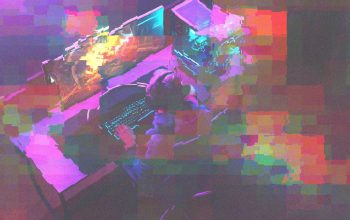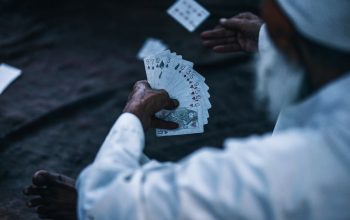Rummy isn’t just about the cards you hold. Sure, a good hand helps, but let’s be honest, the real battlefield is the six inches between your ears. It’s a fascinating dance of probability, memory, and pure, unadulterated human psychology. You’re not just playing a game; you’re playing the people sitting across from you, whether that’s at a physical table or on a screen.
Think of it like this: every discard, every pick from the pile, every moment of hesitation is a tiny piece of a larger puzzle. It’s a story your opponents are telling, often without even realizing it. And your ability to read that story—to get inside their head—is what separates a consistent winner from someone who just gets lucky now and then.
Your Brain on Rummy: The Cognitive Workout
Before we even get to your opponents, you have to understand what’s happening in your own mind. Playing rummy is a serious mental workout.
The Memory Marathon
You’re constantly tracking which cards have been picked, which have been discarded, and by whom. This isn’t just passive remembering; it’s active, strategic recall. It’s like juggling mental post-it notes, trying to figure out which ones your opponent might need. When you remember that the player to your left threw away a Jack of Hearts three turns ago, you’re building a profile. You know a pure sequence with that card is now unlikely for them. That’s powerful intel.
Probability and Pattern Recognition
Your brain is also a lightning-fast probability calculator. With every card that’s revealed, the deck—figuratively speaking—gets smaller. You’re subconsciously updating the odds of drawing the card you need. More than that, you’re looking for patterns in your opponent’s play. Do they always hold onto high-value cards for too long? Do they discard in a predictable sequence? These are the tells, the behavioral fingerprints you need to spot.
The Art of the Tell: Decoding Your Opponent
Okay, here’s the deal. This is where the game truly comes alive. Reading an opponent is part science, part art, and a whole lot of intuition.
The Digital Poker Face
In online rummy, you lose the physical tells—the sweaty palms, the nervous tap, the fleeting glance. But you gain a different set of data points. You have to become a master of digital behavior.
Pay close attention to:
- Speed of Play: A player who suddenly takes a long time to make a move is likely facing a complex decision. Maybe they’re one card away from a declaration and are weighing the risks. Conversely, a very quick discard can signal confidence… or carelessness.
- The “Hover”: In some platforms, you can see when an opponent is looking at the open pile versus the closed pile. That hesitation, that back-and-forth, tells you they are tempted but wary. It’s a window into their uncertainty.
- Chat Box Chatter: Sometimes, a player who starts chatting excessively is trying to distract you or project a false sense of ease. It can be a smokescreen for a weak hand.
Classic Table Tells (And Their Digital Equivalents)
Even though we’re focusing on the more common online play, the principles from live play are timeless. They translate into behavioral patterns you can watch for in any context.
| Physical Tell (Live Game) | Psychological Insight | Online/Behavioral Equivalent |
| Hesitating before discarding a card | They are likely holding a card that completes a set or sequence elsewhere in their hand. It’s a risky discard. | A long pause followed by a seemingly safe, low-value discard. |
| Immediately picking up a discard | They needed that exact card to complete a sequence. This is a clear signal of their current strategy. | An instant pickup from the open pile. You now know one of their melds. |
| Rearranging cards frequently | They are confused or have multiple options. Their hand is likely unorganized, which can be a point of vulnerability. | Less visible online, but can be inferred from slower, more deliberate play as they manage their digital hand. |
Advanced Mind Games: Beyond the Basics
Once you grasp the fundamentals of observation, you can start playing with more advanced psychological concepts. This is where you move from being a player to being a strategist.
Misdirection and The Controlled Discard
This is a classic. Sometimes, you have to throw out a card you think your opponent needs. It sounds crazy, right? But if you’re confident you won’t need it and you’re close to finishing, you can use that discard as bait. You’re forcing them to rearrange their planned sequences, potentially slowing them down. It’s a high-risk, high-reward maneuver that relies entirely on your read of their desperation level.
Emotional Control is Your Superpower
Honestly, this might be the most important skill. Tilt—that state of frustrated, impulsive play after a bad hand or a lucky win by an opponent—is the ultimate enemy. A player on tilt is predictable. They make rash decisions, chase unlikely cards, and forget their entire strategy. Your ability to stay calm, to treat each hand as a new game, is a psychological advantage in itself. You become an unreadable, steady force.
The Bigger Picture: Why This All Matters
So, why go through all this mental gymnastics? Well, it’s not just about winning a game of rummy. The skills you hone here—observation, pattern recognition, emotional intelligence, and strategic deception—are incredibly transferable. They help you in negotiations, in understanding colleagues, in seeing the subtle patterns in everyday life. You become a better reader of people, not just players.
The next time you sit down for a game, take a breath. Look past your own cards. Listen to the silent story the game is telling you. Watch the rhythms of your opponents. Every move is a word, every round is a sentence. The question is, are you just playing along, or are you actually reading the book?




